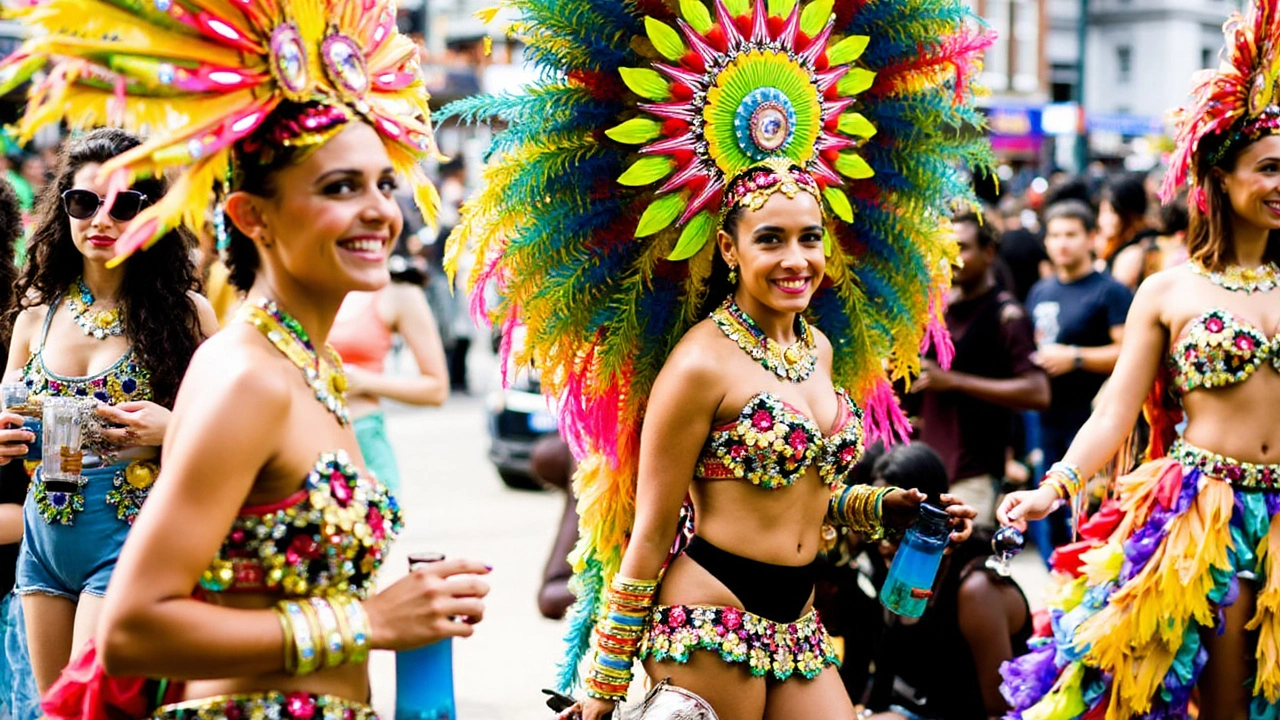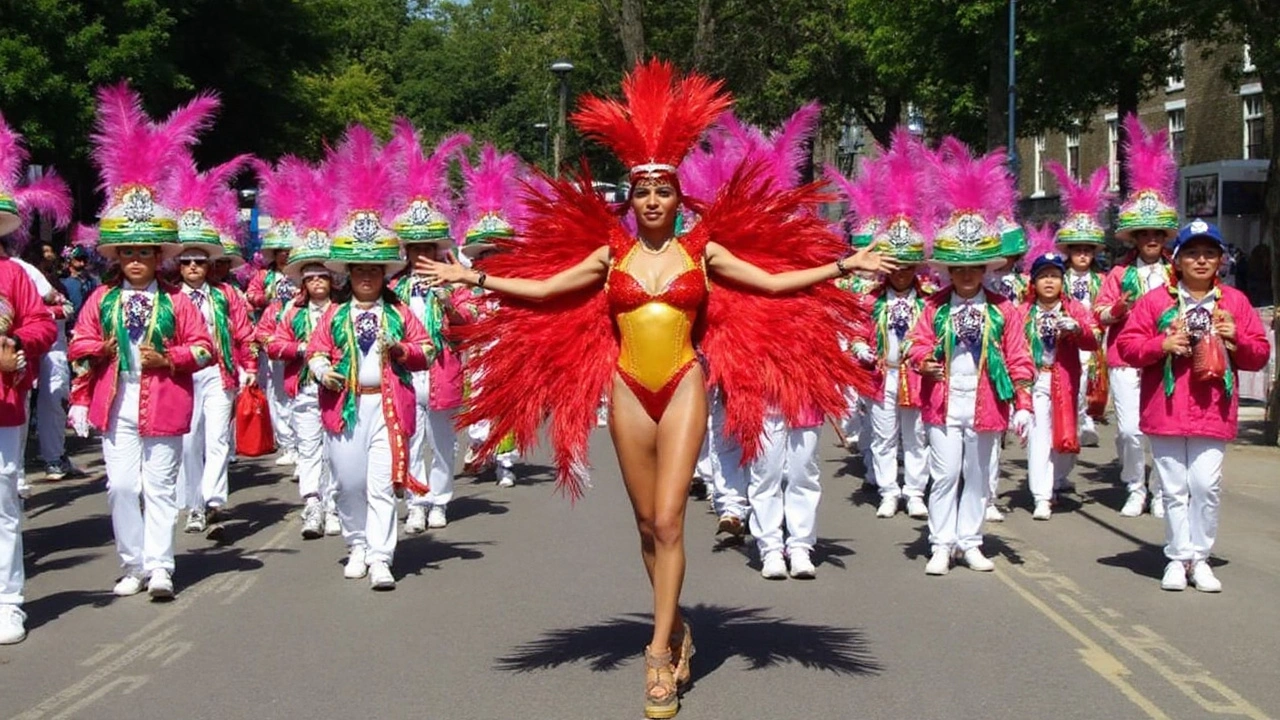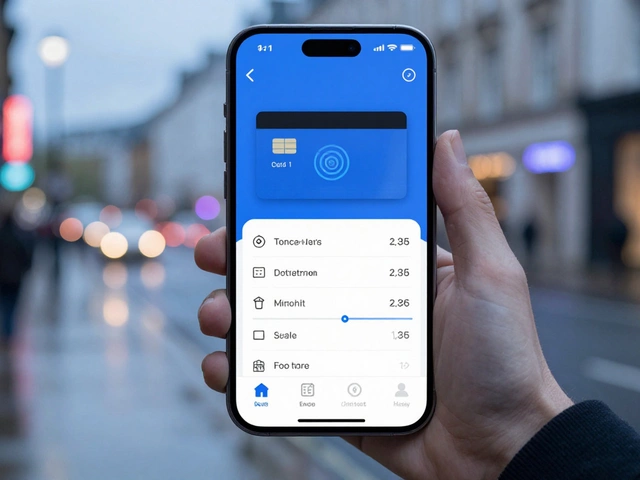Europe’s biggest street party: dates, start times and what to expect
Two million people. Three days. One neighbourhood that turns into a living soundtrack. Notting Hill Carnival 2025 lands over the August bank holiday weekend, filling West London with steel pans, feathered mas bands, and the kind of street food queues you don’t complain about because the jerk smoke smells that good.
The weekend stretches from Saturday 23 August to Monday 25 August. The only ticketed part is Saturday night’s UK National Panorama Steel Band Competition at Emslie Horniman’s Pleasance Park, the country’s showcase for pan orchestras. Everything else across Sunday and Monday is free once you’re inside the carnival footprint.
Sunday is the traditional family-focused day and it starts early. J’Ouvert kicks off at 6am — that’s the paint, powder and chocolate wake-up call set to rolling steel bands. It’s joyful, messy, and for many regulars it’s the spiritual start of their carnival. At 10am, the opening ceremony marks the formal launch, with local figures, visiting artists, and community leaders welcoming everyone in.
Still on Sunday morning, the Children’s Parade takes over — think hand-made costumes, bright wings, and kids dancing in crews that have been rehearsing all summer. It’s one of the warmest parts of the weekend, and a good window if you want lower volume and more space near the barriers.
By late morning into the afternoon, the main Traditional Parade rolls. Expect big feathered headpieces, beaded bodysuits, flag-waving, and a sea of soca and calypso cutting through Notting Hill, Ladbroke Grove, and Westbourne Park. If you’re new: “mas” means masquerade bands in elaborate themed costumes moving with their own trucks and DJs. Sunday afternoon also brings Dutty/Fun Mas — a daytime echo of J’Ouvert, where paint and powder fly again in a looser, interactive format.
Across both Sunday and Monday, more than 30 static sound systems switch on at midday and run until 7pm. Each has its own vibe: reggae and dancehall on one corner, house and amapiano a few streets away, a hip-hop classics session under the trees, samba and soca shaking the pavements somewhere in between. People pick a system and post up for hours, or wander and sample. When the systems cut at 7pm, the streets start to wind down, and stewards and police guide crowds out of the zone.
Monday, the bank holiday, keeps the pedal down. From around 10:30am, the parade routes stir back to life, the big costumes reappear, and the floats crawl through tighter crowds. Sound systems run again from midday to 7pm. It’s the day most visitors choose if they want the full-throttle crush — expect the biggest numbers, the loudest systems, and the longest queues for food and loos. Street parties taper after 7pm, then the music moves indoors to ticketed afterparties across London.
Food is its own scene. More than 300 stalls set up across the footprint, with grill smoke and pepper sauce drifting down entire blocks. You’ll find jerk chicken and pork, doubles and roti, patties, corn soup, pepper pot, macaroni pie, and plenty of vegan and halal options. Bring patience and some cash — most stalls take cards, but signals buckle when the crowds peak.
If you’re planning your day by the clock, this rough guide will keep you on track:
- Saturday 23 Aug: UK National Panorama Steel Band Competition (ticketed) at Emslie Horniman’s Pleasance Park.
- Sunday 24 Aug: J’Ouvert from 6am; Opening Ceremony at 10am; Children’s Parade follows; Traditional Parade and Dutty/Fun Mas through the afternoon; static sound systems midday–7pm.
- Monday 25 Aug (Bank Holiday): parade elements from around 10:30am; static sound systems midday–7pm; dispersal through early evening.
There isn’t one single “best spot.” Families often aim for earlier hours along wider streets and near exits. Parade regulars camp near judging points and bends where the trucks slow down. Sound-system loyalists head straight for their favorite rigs and don’t move. If you want space, arrive early, stand back from bottlenecks, and avoid cross streets that funnel crowds.

How to get there, stay safe, and make the most of it
The carnival footprint is dense, and driving is a non-starter. Road closures wrap the area from Saturday through late Monday, with parking bays suspended and resident access carefully controlled. Leave the car. Take public transport and expect a long walk at either end. Many Tube and Overground stations near the route switch to exit-only, close temporarily, or operate one-way systems to manage flows. Plan your arrival for earlier in the day, check live updates before you set out, and consider getting off a stop or two away and walking 15–25 minutes. It’s often faster and calmer.
Buses will divert around the entire zone, sometimes skipping multiple stops. If you’re meeting friends, do not pick a station concourse or a busy junction as your rendezvous spot. Choose a landmark well outside the closures and set a time window, not a single minute. Network coverage can be unreliable once the streets are full. Save an offline map, screenshot your tickets, write down numbers, and pick a backup meeting point in case you get split.
Accessibility has improved in recent years, but carnival is still a crowded outdoor event over uneven streets. Organisers typically provide accessible viewing areas, dedicated toilets, and stewards trained to help. If you need step-free routes or a quieter vantage point, contact the organisers in advance to confirm access options and book a spot. On the day, travel earlier, avoid the tightest chokepoints, and use side streets to move between sections. Ear defenders for kids (and honestly, for adults too) are a smart buy — sound systems can be very loud up close.
Bring the basics: a reusable water bottle, sunscreen, a small poncho (showers happen), and comfortable shoes you don’t mind getting dusty or splashed. Pack light. A small cross-body bag that zips and sits in front of you is better than a backpack. Keep your phone and wallet deep inside. If you’re coming with children, put a contact number on a wristband or a note in a pocket, take a picture of what they’re wearing, and agree where to go if you get separated. Lost child and welfare points are clearly signposted — if you can’t see one, ask a steward or police officer.
There’s a good chance it’ll be warm — late August often is — but London weather can turn quickly. Hydrate. Top up at water refill points and stalls. If it’s hot, step back from the densest crowds and take shade breaks. If it’s raining, the parade doesn’t stop; the costumes just glisten more.
Etiquette keeps the day flowing. Stay behind barriers and off the floats. Don’t block emergency access lanes. Ask before taking close-up photos of performers, especially children. If you’re playing with paint or powder, be mindful near prams and cameras. Many local shops discourage glass — plastic or cans are safer in crowds — and littering just slows the clean-up teams who turn the streets around overnight.
Cash or card? Both. Card machines are common now, but when the mobile signal dips, cash keeps queues moving. Set a realistic budget; it adds up fast between food, drinks, and travel. A power bank is worth the pocket space so your phone doesn’t die just when you need to find your friends.
Where should you stand? If you want the parade, follow the music to the wider stretches around Ladbroke Grove and Westbourne Park where trucks have room. For sound systems, you’ll hear them before you see them — drift toward a genre you like and ease in at the edges. Families often pick a spot near toilets and food, watch a few sections go by, then step back for breaks.
What about after 7pm? Sound systems and floats shut down at the curfew time so people can leave safely and cleaning crews can work. Don’t hang around waiting for a secret late set; it rarely happens, and police and stewards will encourage you to move on. If you’re heading to an afterparty, factor in walking time out of the zone and possible station queues. Book tickets in advance; the best nights sell out.
Behind the scenes, thousands of volunteers, performers, cooks, drivers, stewards, medics and sanitation teams make the weekend happen. The event is rooted in Caribbean culture and community pride, shaped by the Windrush generation and local activists who turned a neighborhood celebration in the 1960s into an open-air institution. The steel pan orchestras rehearsing for Panorama start months out. Mas camps stitch and bead costumes late into the night. Sound system crews test stacks and wire streets for days. Then, in 48 hours, it’s up, it’s euphoric, and it’s gone again.
For residents, the weekend is a mix of joy and disruption. Local businesses take on extra staff and extend hours. Streets close early and reopen late. Bin collections shift. If you live nearby, move your car well ahead of time, stock up before Saturday, and use earplugs if you need them — the bass travels. If you’re visiting, be respectful: don’t block doorways, keep noise down on residential side streets, and take your rubbish with you if bins are full.
If something goes wrong, you’ve got options. Welfare hubs, first aid points, and stewards are spread throughout the route. For minor injuries, go to a first aid tent rather than dialling emergency services — it’s faster. If you feel unsafe or see someone who needs help, tell a steward or police officer. For serious incidents, call emergency services and give the nearest street name or landmark. If you’re lost or overwhelmed, step into a shop or approach a steward and ask for the nearest safe space.
Quick planning checklist before you go:
- Agree two meeting points outside the busiest zones.
- Save an offline map and charge a power bank.
- Wear closed, comfortable shoes and bring a poncho.
- Pack a reusable water bottle and sunscreen.
- Carry some cash as a backup to cards.
- Write your phone number on a child’s wristband or note.
- Aim to arrive early and leave before or just after the 7pm curfew to beat the biggest crowds.
One last thing on expectations. There’s no single way to “do” carnival. Some people arrive at dawn for J’Ouvert and are home by lunchtime. Others dance behind a mas band all day. Some post up at a sound system and hardly move. However you approach it, pace yourself. Eat. Hydrate. Step back for air. And take a moment to look up from your phone and watch the costumes, the pan players, the flag wavers, the aunties serving steam from giant pots. That’s the heart of the weekend.



